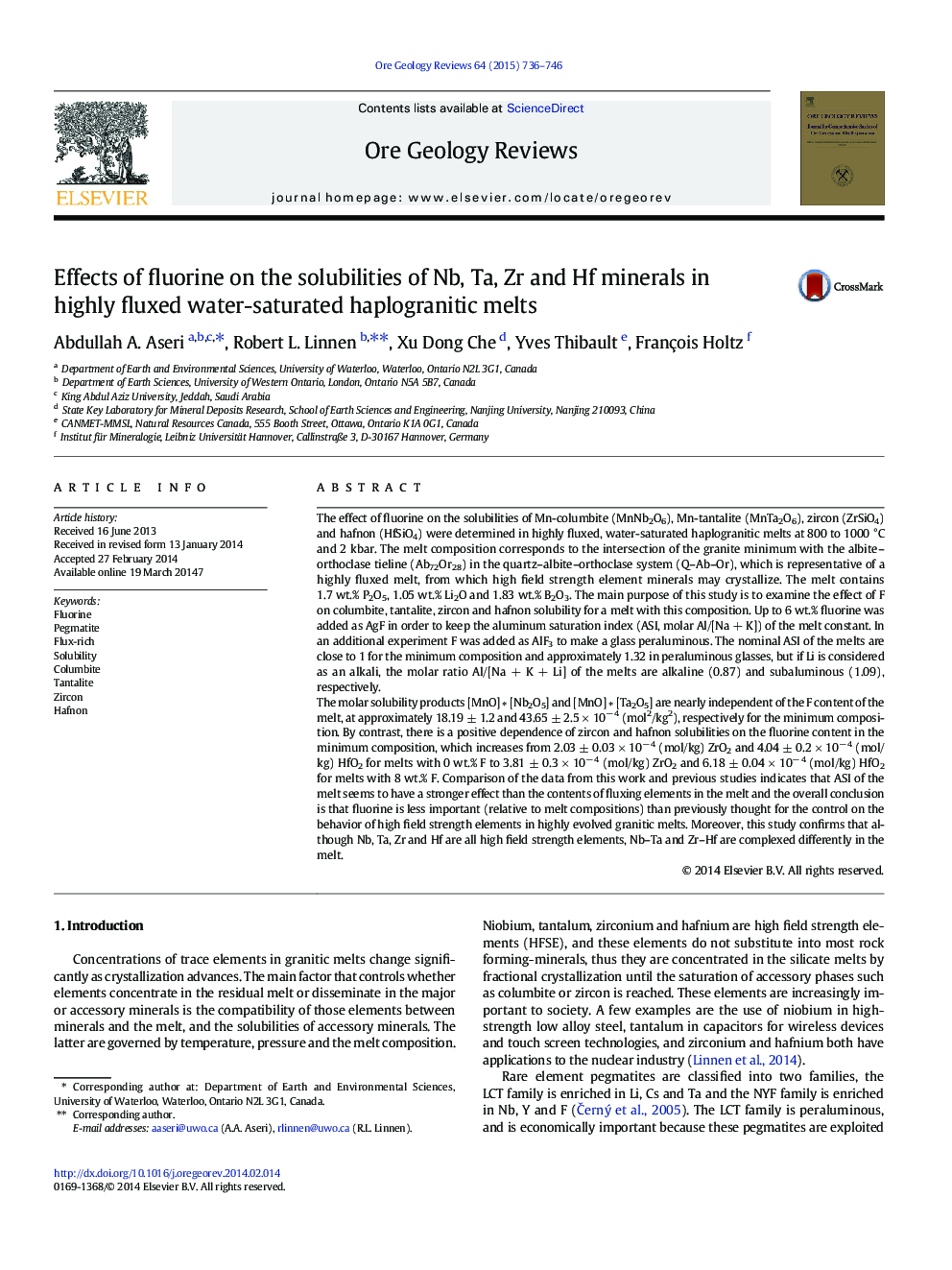| Article ID | Journal | Published Year | Pages | File Type |
|---|---|---|---|---|
| 4697132 | Ore Geology Reviews | 2015 | 11 Pages |
The effect of fluorine on the solubilities of Mn-columbite (MnNb2O6), Mn-tantalite (MnTa2O6), zircon (ZrSiO4) and hafnon (HfSiO4) were determined in highly fluxed, water-saturated haplogranitic melts at 800 to 1000 °C and 2 kbar. The melt composition corresponds to the intersection of the granite minimum with the albite–orthoclase tieline (Ab72Or28) in the quartz–albite–orthoclase system (Q–Ab–Or), which is representative of a highly fluxed melt, from which high field strength element minerals may crystallize. The melt contains 1.7 wt.% P2O5, 1.05 wt.% Li2O and 1.83 wt.% B2O3. The main purpose of this study is to examine the effect of F on columbite, tantalite, zircon and hafnon solubility for a melt with this composition. Up to 6 wt.% fluorine was added as AgF in order to keep the aluminum saturation index (ASI, molar Al/[Na + K]) of the melt constant. In an additional experiment F was added as AlF3 to make a glass peraluminous. The nominal ASI of the melts are close to 1 for the minimum composition and approximately 1.32 in peraluminous glasses, but if Li is considered as an alkali, the molar ratio Al/[Na + K + Li] of the melts are alkaline (0.87) and subaluminous (1.09), respectively.The molar solubility products [MnO] ∗ [Nb2O5] and [MnO] ∗ [Ta2O5] are nearly independent of the F content of the melt, at approximately 18.19 ± 1.2 and 43.65 ± 2.5 × 10− 4 (mol2/kg2), respectively for the minimum composition. By contrast, there is a positive dependence of zircon and hafnon solubilities on the fluorine content in the minimum composition, which increases from 2.03 ± 0.03 × 10− 4 (mol/kg) ZrO2 and 4.04 ± 0.2 × 10− 4 (mol/kg) HfO2 for melts with 0 wt.% F to 3.81 ± 0.3 × 10− 4 (mol/kg) ZrO2 and 6.18 ± 0.04 × 10− 4 (mol/kg) HfO2 for melts with 8 wt.% F. Comparison of the data from this work and previous studies indicates that ASI of the melt seems to have a stronger effect than the contents of fluxing elements in the melt and the overall conclusion is that fluorine is less important (relative to melt compositions) than previously thought for the control on the behavior of high field strength elements in highly evolved granitic melts. Moreover, this study confirms that although Nb, Ta, Zr and Hf are all high field strength elements, Nb–Ta and Zr–Hf are complexed differently in the melt.
